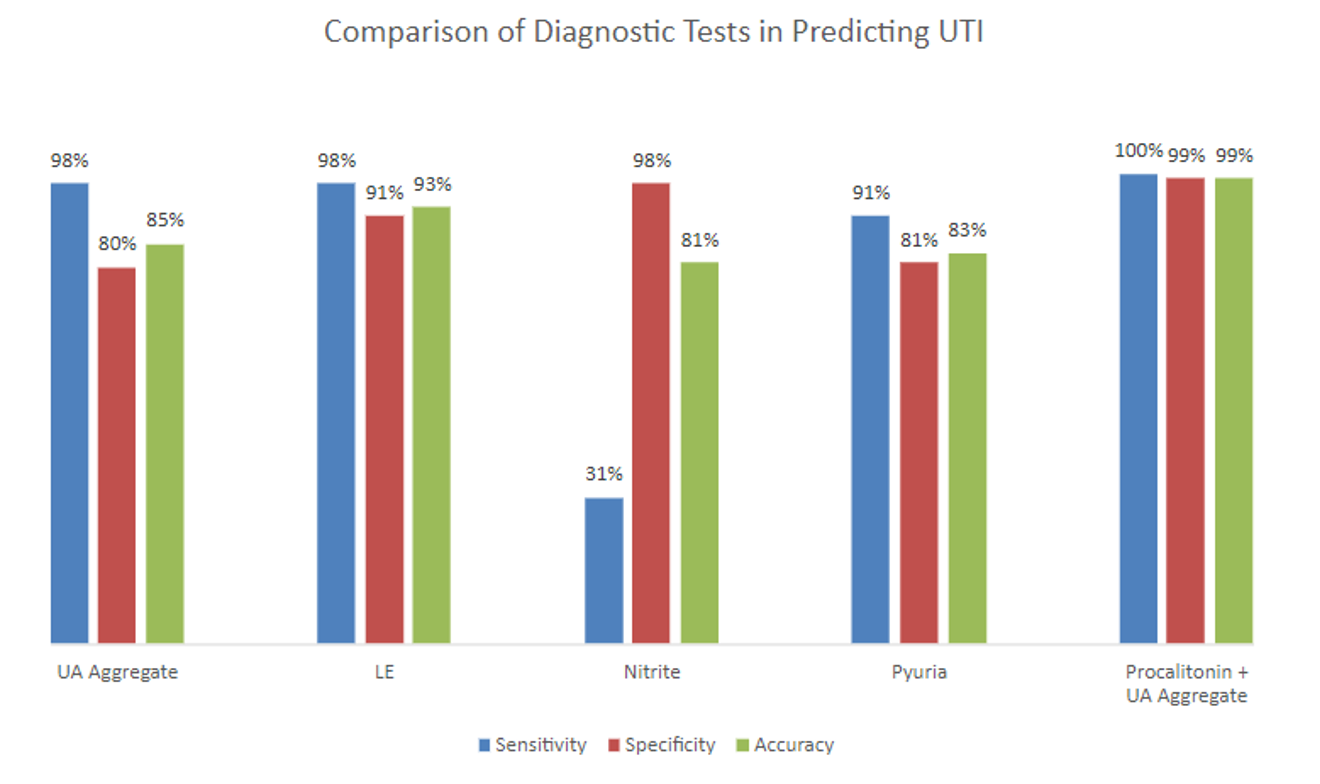Hospital Medicine
Session: Hospital Medicine 1
313 - Utility of Urinalysis and Procalcitonin in Detecting Urinary Tract Infections in Well-Appearing Febrile Infants 8-28 Days Old
Friday, May 3, 2024
5:15 PM - 7:15 PM ET
Poster Number: 313
Publication Number: 313.356
Publication Number: 313.356
- JL
Jennifer T. Lemke, MD (she/her/hers)
Pediatric Resident
Phoenix Children's Hospital
Scottsdale, Arizona, United States
Presenting Author(s)
Background: Urinary tract infections (UTIs) are a common bacterial infection in infants, accounting for over 90% of all bacterial infections in febrile neonates. Urinalysis (UA) is a commonly used screening test for UTI. There is a lack of consensus regarding the accuracy of urinalysis in well-appearing infants below 28 days old. Procalcitonin, on the other hand, has shown a high correlation with invasive bacterial infections, including UTIs in infants. However, the specificity of procalcitonin in detecting UTIs when combined with UA in infants under 28 days old has not been previously studied in the literature.
Objective: This study aims to evaluate the accuracy of UA, both alone and in combination with procalcitonin, for detecting UTIs in infants below 28 days old, with potential implications for managing UTIs in infants.
Design/Methods: A retrospective study of febrile infants 8-28 days old presenting to a tertiary children's hospital from 2018 to 2022. Patients with a history of prematurity, those admitted to the intensive care units, and those with comorbidities were excluded. Data collected included demographics, urinalysis, urine culture results, and procalcitonin. UA defined as positive if leukocyte esterase (LE), nitrite, or pyuria (>5 white blood cells/HPF) were present. Procalcitonin defined as positive if the value was 0.5 ng/mL or higher. Statistical measures, including sensitivity and specificity, were calculated with 95% confidence intervals.
Results: Of the 589 infant charts reviewed, 385 met inclusion criteria, and 101 infants were diagnosed with UTI. Escherichia coli was the most common urinary pathogen identified on culture, accounting for 95% of all urinary pathogens. Aggregate UA demonstrated a high sensitivity of 0.98 (95% CI: 0.93-0.99) and a specificity of 0.80 (95% CI: 0.75-0.84). LE showed a sensitivity comparable to the aggregate UA at 0.98 but a higher specificity of 0.91 (95% CI: 0.88–0.94). Pyuria demonstrated a lower sensitivity of 0.91 and a lower specificity of 0.81. Nitrite demonstrated the highest specificity of 0.98 (95% CI: 0.96-0.99) but a low sensitivity of 0.31 (95% CI: 0.22-0.41). When a procalcitonin level of 0.5 ng/ml or higher was used in combination with aggregate UA, it showed an improvement in both sensitivity to 1.0 (95% CI: 0.99–1.0) and specificity to 0.99 (95% CI: 0.94-0.99). (Figure 1)
Conclusion(s): By integrating UA results with procalcitonin values, we achieved superior sensitivity and specificity in predicting UTIs in febrile neonates ages 8-28 days compared to UA alone.

